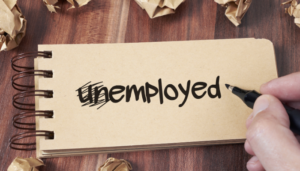What are the Hazards in a Warehouse?
Warehouses are complex organizational structures that grow and evolve within your company. In the hussle of growing and developing your business, it is easy to take for granted that your warehouse is chugging along, functioning fine as a stable, unchanging unit. What are the hazards in a warehouse?
Yet, just like checking the oil level in ones’ car, or doing a computer update on your office software, regular care and keeping of your warehouse is vital to streamlined and efficient workflow.
You know that regular upkeep on your warehouse is needed. You also know that, just like updating a computer or changing your oil- such maintenance takes time, attention, and resources- while not necessarily feeling urgent.
The main issue here is that, while not urgent, the ramifications of failing to attend to your warehouses’ safety can create a plethora of negative effects. Including loss of productivity, loss of reputation and most importantly- loss of safety to your employees.
What Are The WORST Negative Effects Of Poor Safety in Warehouses?

As an employer, you are responsible for providing your employees with a safe working environment. For those businesses residing in Ontario, Canada, for example, they are held accountable for their workplace safety by the Ontario Health And Safety Act (OHSA).
Workplace inspections are performed by the Ministry of Labour. Training & Skills Development Inspectors operating under Healthy & Safety regulations, conduct their inspections to ensure that your facility is adhering to the guidelines set out in the Occupational Health and Safety Act.
The inspector has the right to issue orders to a warehouse, including Stop-Work orders, which may be put in place until safety conditions are met.
If your warehouse is found to have violations, your business may be subject to tickets, fines, orders to change, stop-work/shutdown orders, and even charges. In severe cases, convictions to your corporation are possible
If this seems a little extreme to you, that’s’ because it is.
Lapses in workplace safety can lead to a host of problems- most importantly, harm caused to human life.
Yet, loss of human life, while the worst of tragic and extreme situations, is not the only negative outcome to unsafe warehouses. Let’s take a look at some others.
How Do Unsafe Warehouses Create Loss Of Productivity?

From a high level it seems obvious that a Stop-work order or a warehouse shut down will stop productivity. Yet loss of productivity can have more nuanced and sweeping effects than a clear stop in a production line.
Delays Due To Fixing Safety Issues
We can understand the severity and scope of loss of productivity due to safety issues through a few scenarios, like these below.
A level of racking received damage, and now must be replaced. You’ll need to pause your operations partially to clear the rack, tear it down, and replace the parts. You may need to cancel the shifts of a few employees to make space for the upgrades. It is likely you will lose a day or longer in order to address this. Or you could simply clear the level and otherwise ignore the damaged rack.
You find damage to a machine that is creating an unsafe condition. Your production line may be stalled while repairs are done, or you may choose to use the machine with the addition of safer protocol. Regardless; time, attention and resources will be needed to handle the change, slowing productivity and possibly requiring expensive replacement.
While the exact cases may be too numerous to mention, productivity is lost in all of them- not only through labor, but through the use of mental and practical resources required to do the repairs and augmentations necessary. Yet, in all circumstances, early intervention, and most importantly prevention could have stopped the situation from reaching this point.
Damage To Product Or Warehouse Itself

Perhaps the issue is not with safety to human lives, but unsafe practices. As an example:
A failure to protect your pallet racking systems means that damage has occurred to the racking system, which now needs replacement or risks harming the product. Productivity is lost while the rack is replaced.
Or
A failure to safe-gaurd your warehouse walls means a forklift accident has damaged your facility. Productivity is lost while damages are repaired.
In these above scenarios prevention in the form of advanced protection saves time, labor, resources and ensures safety to the product and production pipeline.
Loss Of Productivity Caused By Unattended-To Conditions

All too often small problems with simple fixes are allowed to remain, as their inconvenience is slightly less taxing than the annoyance of addressing them. On the surface, these seem like fairly harmless inconveniences, however, they can be the causes of larger issues down the line.
Consider this scenario in your warehouse’s racking system.
An unprotected rack has been damaged by a forklift, and is no longer able to support the weight of the product it holds. To keep conditions safe, product is removed from this single rack, but the rack is not teared down or fixed, as this would cause more delays. The damaged rack is exposed to moisture, rusts, and eventually collapses. The collapse causes the rack to fall onto racking with product on it- damaging the product, the pallets, the working racking system, and injuring an employee in the process.
In this case, a simple solution at the right time would stop this lost productivity and additional damages.
How Do Unsafe Warehouses Lead To Reduced Growth?

Unsafe warehouses take a lot out of a company and it’s bottom line. To go back to our earlier example of updating computer software, failure to update a computer does not only slow the computer (loss of productivity) but it also increases your risk for malware (in this case, loss of growth).
Your warehouse may not have safety concerns that are actively causing harm- but without addressing them, you are reducing your growth potential.
Let’s take a look at some additional examples.
Loss Of Growth Through Conditions Causing Product Damage
When we fail to address issues that have the potential to reduce our growth, we are inadvertently affecting our bottom line. Consider the examples below:
Your temperature-controlled warehouse has a leak in it, and a full repair will be costly. The leak is only noticeable in winter- and thus is temporarily patched for this time. However, the insects that get in during the summer months can wreak havoc on the product you’re shipping out.
Or;
The crack in the warehouse’s ceiling is harming no one, so it is left unrepaired with a sign to alert people to avoid the leaking it causes. However, the water that seeps in from a major storm ruins a pallet of car batteries your warehouse is storing.
In these situations the unsafe working conditions are small and seemingly harmless. As easy as they are to overlook, they risk damage to your product- which is always affecting the bottom line.
Loss Of Growth Due To Damage To The Warehouse Itself

You are likely paying a good deal of money to use your warehouse, and keeping it safe and protected should matter to the bottom line of the company. Some changes for warehouses are not to address safety issues, but to proactively protect against damages, as seen in the scenario below.
A properly trained forklift driver will never back into a wall- in theory. Yet accidents happen, and an unprotected wall struck by a forklift damages the warehouse wall and the nearby racking.
In the scenario above, the damage can be avoided by installing safety features proactively.
The thing is- warehouses do not need safety maintenance just for addressing current issues. They also need safety maintenance for proactively reducing risks.
Loss Of Growth Due To Damage To Personelle

Let’s skip the scenario example here, as considering a death from a workplace accident is deeply distressing. We still can discuss the plethora of negative effects resulting from it.
In cases such as these, the loss of growth for the company may seem negligible against the loss of human life and those affected by it. Outside of this worst case scenario (tragedy to the loved ones family) there is damage caused to employees who obtain injuries due to unsafe conditions, practices or protocols put in place in the name “productivity.” Losing trained, vital staff for any length of time, reduces efficiency and lowers growth and output.
In some cases, unsafe conditions may lead to higher turn over, which lowers growth due to the resources needed to source and train new staff.
Additionally, lack of proper safety may be noticed by a safety inspector, who may make recommendations for additional safety training. While this additional safety is necessary and beneficial, the time it takes to train the staff can reduce growth in the short term- which may not need to happen if proper safety training is a regular part of your Warehouses’ standard practice.
What Are The Lesser-Known Negative Effects Of Poor Warehouse Safety?

It is important to understand that warehouse safety is not just a practical choice companies need to make for their product, their facility and their team. Lack of warehouse safety, even on a minor scale, can derail a company in otherwise good standing, in a small amount of time.
Poor Warehouse Safety Ruins Public Company Reputation
Contrary to popular belief, there is such a thing as bad publicity, especially where workplace safety is concerned. A company may spend decades building a strong public image, only to watch it disintegrate rapidly after public exposure in the face of a serious workplace accident.
Unsafe Warehouses’ Harm Employee Performance And Loyalty
If a company does not appear to care about operating its’ warehouse in a safe manner, it is fair to expect the employees to mirror that attitude.
In cases of warehouse and workplace safety, it is necessary for the employer to lead by example. Lax attitudes from management can trickle down to lax employees. In turn, these employees may feel their own safety is not a paramount concern to their employer, which can erode morale, company trust, and overall staff loyalty.
Consider incentivizing employees to report unsafe working conditions.
Unsafe Warehouse Conditions Can Lead To Damaged Industry Reputation

A company with health and safety violations faces an uphill battle to regain industry trust, and positive brand recognition. Negative press can affect brand reputation and poor company response can harm industry relationships.
Internally, staff may feel less safe at their jobs, which can lead to stress, health and wellness issues, decreased productivity, lower standards and expectations, and overall lower performance.
It may be costly to maintain a safe warehouse- but it is far more costly not to.
What Can You Do About Warehouse Safety?
The fact is, there are easy, simple and yes, cost-effective ways to keep and upgrade your warehouse to be safe and efficient! With a little bit of planning and resource management, you will never have to face a situation where loss of time, money, or even human life, need to affect you.
Increase Warehouse Safety By Getting A Pre-Start Safety Inspection!
As a company dedicated to planning, creating, installing and maintaining racking systems, Racked Out can vouch for the validity and reliability of Pre-Start Safety Inspections. These inspections are designed to confirm racking system safety, and assure you that your system is in compliance with all applicable protocol for the Ontario Ministry and Board of Labor
Both the ministry and Racked Out strongly encourage on-going training on rack load recommendations, tracking and reporting system damage, safe operation of equipment around racking installations, daily inspection duties, and any other site-specific requirements.
Racked Outs’ professionally certified and fully trained team, can conduct safety inspections for any racking system.
Increase Warehouse Safety With Facility Safety Systems
Many companies (Like us!) also offer Facility Safety Systems. Facility Safety Systems are a series of products and guidelines used to protect aspects of your facility from increased risk or damage. Guardrails, pallet protectors, railings and various other protective equipment that can save your warehouse, your products and your people from damage.
The team at Racked Out can design a series of recommendations geared towards your warehouse, your product and your teams’ specific needs.
That’s Great! But What Else Can I Do To Keep A Safe Warehouse?

A great question! Here are a few tips and tricks below!
- A comprehensive daily check-list of safety precautions, which is reviewed daily by key staff / Supervisors
- Clear, easy-to-understand ways to report and address any safety-concerns
- Staff trained in basic safety and warehouse risk management
- Regular on-site safety checks and walkthroughs
- Detailed notes on daily safety reports, signed by supervisors
- Good lighting and stable, clear, dry working surfaces
- Organized storage systems and protocols
- Sign-in / sign-out for gear and equipment
- On-going safety training and refresher courses
- Third-party safety reviews and assessments
- Proper ventilation, and climate control for product and personnel
- Practical, and appropriate break times for staff
- Staff access to basic necessities, such as water, rest-rooms, rest areas, and easy access to emergency medical care (First Aid Kits / Eye-Wash Stations)
- On-going revisions to ergonomic working environments
- Regular re-evaluation for warehousing systems to ensure efficiency and safety
- Positively recognize those who prioritize safety
Do You Have Safety Tips You Use In Your Warehouse? We’d Love To Know!
Racked Out wants to hear your safety tips! Drop us a line anytime. And if you’d like to check out our advanced safety services, including our Pre-start safety inspections and Safety Facility Services, check out our website here.
Sources:
https://www.ontario.ca/document/guide-occupational-health-and-safety-act
https://seerackinginspections.co.uk/what-are-the-costs-of-dangerous-warehouse/
https://www.logiwa.com/blog/warehouse-safety
https://gocontractor.com/blog/the-cost-of-an-unsafe-workplace/
https://ehsdailyadvisor.blr.com/2020/08/creating-a-safe-environment-for-warehouse-employees/
https://www.apsfulfillment.com/warehousing-solutions/how-to-have-a-safer-warehouse/
https://www.axelent.com/axel/build-a-safe-warehouse/
























































